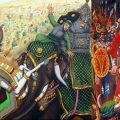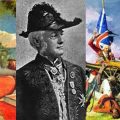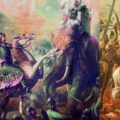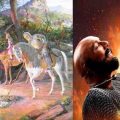Indian History Textbooks: Their Content and Criticism
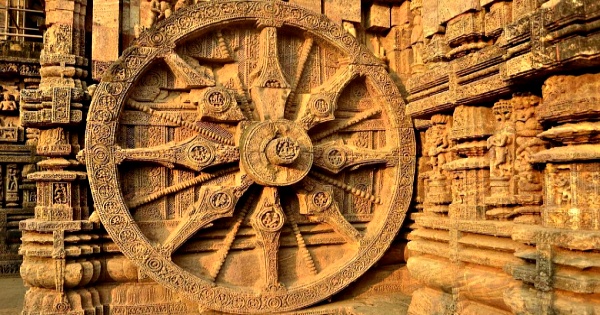
History textbooks are a subject of intense debate worldwide, as they shape students’ understanding of their identity and culture. In India, textbooks hold significant educational value and occupy a prominent place in schools. However, due to the importance of history in defining who we are and where we come from, criticisms surrounding history textbooks are particularly strong. In a diverse country like India, differing interpretations and opinions about the content and presentation of historical facts further fuel these debates.
In India, the National Council of Educational Research and Training (NCERT) is responsible for developing the national curriculum frameworks and model textbooks for schools in India. While some states develop their own textbooks, many use the NCERT syllabuses for guidance. Discussions regarding curriculum, syllabus, and textbooks in Indian history primarily revolve around those published by NCERT. Over more than two decades experience at NCERT, I’ve identified 4-5 issues that receive the most criticism in India, which are also common in history textbooks worldwide. These are:
Insufficient information or omission
In the telling of history this has sparked some of the most challenging conflicts worldwide. Critics often point out that history textbooks lack sufficient content or fail to include important periods. In Indian history, for instance, concerns have been raised about the omission of significant eras like the Vedic and Post Vedic period, as well as the growth of nationalist consciousness and political movements during 1858-1915 in the present history textbooks. History textbooks also face criticism for not adequately covering recent advances, such as genetic evidence related to the Aryan issue. Additionally, objections arise over superficial coverage of personalities like Bhagat Singh, Chandrashekhar Azad, Vivekananda, Subhash Chandra Bose, Jain Tirthankaras, Mahatma Gandhi, and Sardar Vallabhbhai Patel. There are also claims of ‘regional imbalance’ in textbooks that neglect the history of various regions and communities like the north-east, south, and Marathas.
Errors
Textbooks are often criticized for containing errors in dates, facts, and spellings. These mistakes can misrepresent historical events and individuals. For instance, the textbook mentions the wrong year for the Kheda satyagraha, stating it as 1917 instead of the correct year, 1918. Inaccurate attributions are also a concern, as Madho Swarup Vats is wrongly credited with excavating Harappa in 1921, whereas it was actually Daya Ram Sahni who conducted the excavation. Additionally, spelling errors are found, such as writing “Jnaneshwar” as “Dnyaneshwar,” which misrepresents the name of the saint-poet from Maharashtra. These errors undermine the reliability and accuracy of the information presented in the history textbooks.
Ideological issues
Critics argue that history textbooks are often politicized and present a one-sided view of historical events. Examples include labeling the 1857 revolt as only a “mutiny” or “popular rebellion” and describing stone cones from Harappan civilization as mere toys without providing alternative explanations. Additionally, some textbooks mention Aurangzeb’s donations to rebuild temples but remain silent on his destruction of temples.
Appropriateness of words
There are objections to the use of certain words, such as “terrorist” for revolutionaries, “refugee” for those who came to India from Pakistan during partition, and “invaded” for the Indian National Army’s actions against British control. Additionally, there are issues with not using honorifics for Sikh Gurus or referring to Meerabai as a “wanderer.”
Sources
History textbooks prepared following National Curriculum Framework 2005 have excerpts from different primary sources. These textbooks have faced criticism for selectively quoting sources or presenting edited excerpts to push a particular view.
Implications of criticisms
Scholars and the public are concerned about the presentation and accuracy of information. This is not unique to India, as history is a subject that requires careful attention to facts and interpretation. The criticisms have implications for improving the quality of future textbooks and other curricular materials in history. We need to understand that the inclusion and dosage of information in history textbooks depends on a curriculum that states what students should learn in a particular year. India has a vast, many-layered and complex history and it is not possible to cover the entire mosaic of such a vast history in any textbook of history. In such a situation, the need for making a selection from among enormous historical knowledge becomes inevitable. However, the method of selecting historical topics or developing history curriculum should be made not only open to public review and scrutiny, but also open to public discussion and revision if necessary.
As far as regional imbalance is concerned, we need to recognize the practical difficulty in covering the rich and varied histories of this vast and culturally diverse country ‘in its entirety’. However, different strategies may be thought of to address the issue of ‘regional imbalance’ like having content/exploratory activities on different regions, its people and culture under QR Codes. Information must be complemented with other written, audio and visual resources, which includes readers, source books, workbooks and activity books, atlases, magazines, CDs, software and audiovisual material.
Textbooks undergo corrections for errors prior to reprinting. However, if an error is discovered during use, an online erratum can be made available online. Another important lesson that we get from these criticisms is that whatever may be the case/issue, multiple viewpoints and perspectives, need to be discussed. Several sources related to the same event from various points of view must be provided in order to establish a basis for comparison in a multi-perspective approach. It is not appropriate to dismiss unpleasant or controversial facts as they require our attention to prevent them from happening again.
The use of primary sources is an important aspect of teaching and learning history worldwide, but in India, it is a recent development. The present history textbooks have excerpts from different primary sources, but without reference. So there is a need to mention the sources or references used by the authors. The learner needs to identify the source’s author, interpret the source’s motivation, and assess the fairness of the argument made there. Lack of provenance (the source’s origin, author, and purpose) limits high-level and historical questioning, so textbooks must include more detail about the source and allow for contestation.
Today, many enthusiastic individuals, organisations and media (including various social media platforms) are vigilant with regard to the content and quality of history textbooks. This has the potential to keep a check on what is being given in the textbooks; it also poses serious challenge for those involved in the preparation of curriculum, syllabus and textbooks in such a vast and diverse country of ours. There is a need to value all academic viewpoints. This challenge may also be addressed by focusing less on textbooks and by going beyond textbooks, openly discussing different views and perspectives, and encouraging creative pedagogies, such as involving students in field trips or mini-research projects to bring history to life.
Featured image (for representation purpose only) courtesy: Google.
Seema Shukla Ojha
Latest posts by Seema Shukla Ojha (see all)
- Indian History Textbooks: Their Content and Criticism - November 21, 2024

